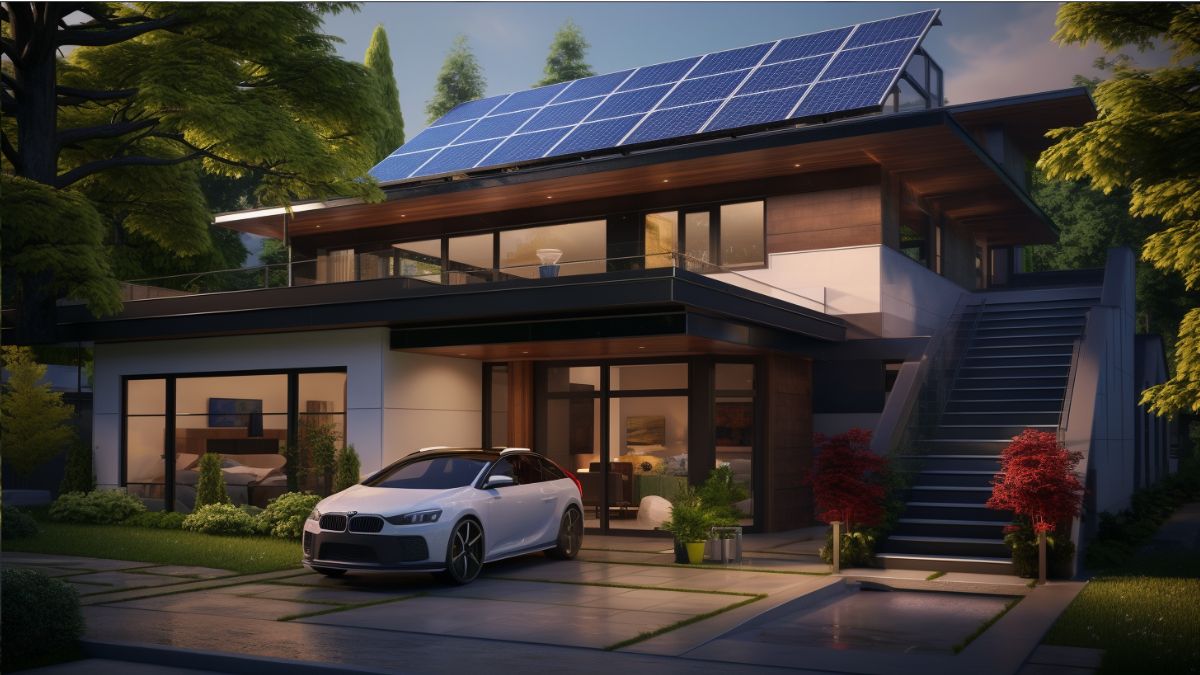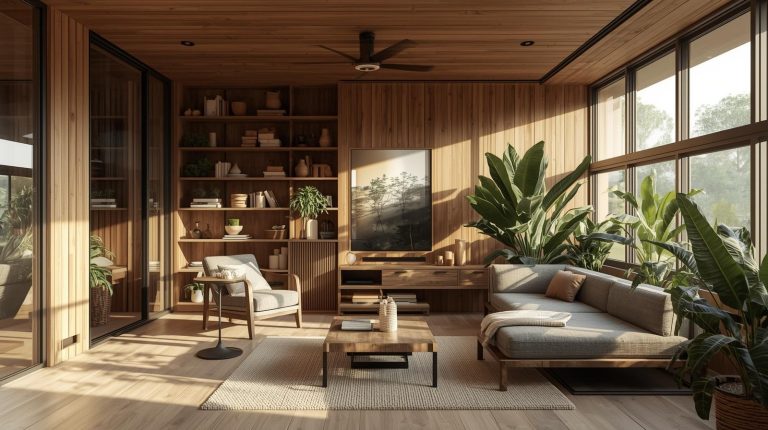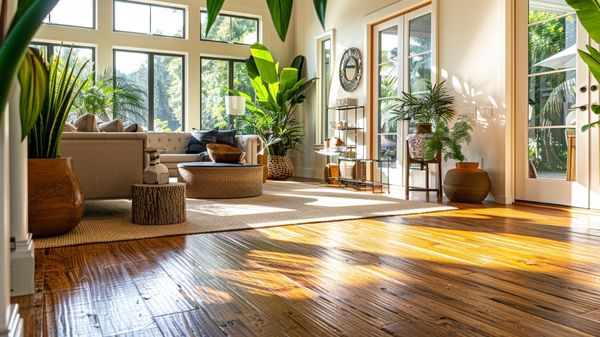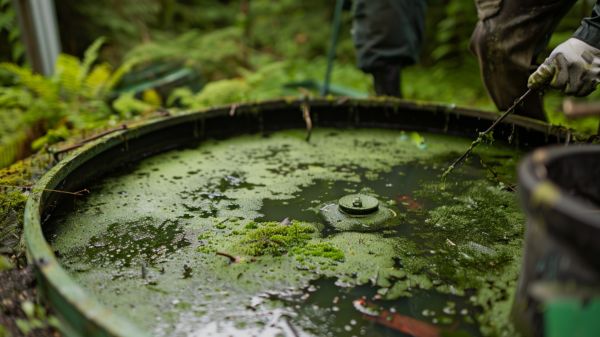Are you ready to take your home on a journey towards sustainability? Upgrade your living space with green home improvements and pave the way for a more environmentally friendly future.
By making simple changes like upgrading lighting, installing energy-efficient thermostats, and enhancing insulation, you can reduce your carbon footprint while saving money on utility bills.
With a wide range of options available, from eco-friendly materials to solar panels and rainwater harvesting systems, you have the power to transform your home into an oasis of sustainability.
It’s time to join the movement and create a home that not only belongs to you but also belongs to the planet.
Key Takeaways
- LED lighting and programmable thermostats are simple and cost-effective ways to save energy and lower utility bills.
- Caulking and weather-stripping can significantly reduce heating costs by sealing air leaks in the home.
- Upgrading windows and doors with energy-efficient options can lead to substantial savings on energy expenses.
- Installing solar panels and rainwater harvesting systems offer renewable energy solutions and reduce reliance on fossil fuels and water consumption.
Lighting Upgrades
If you want to save money on energy costs, you should consider upgrading your lighting to LED bulbs. LED bulbs are not only energy-efficient but also last 15 times longer than incandescent bulbs. This means fewer trips to the store and more savings in the long run.
By making this simple change, you can reduce your carbon footprint and contribute to a greener environment.
When it comes to eco-friendly and green home improvements, lighting upgrades are one of the easiest and most effective solutions. LED bulbs use up to 90% less energy than traditional incandescent bulbs, which can lead to significant savings on your electricity bill. In fact, switching all the lights in your home to LED versions can save around $225 in energy costs per year.
Not only are LED bulbs more energy-efficient, but they also produce less heat compared to incandescent bulbs. This can help reduce the strain on your cooling system during hot summer months, resulting in additional energy savings.
In addition to being cost-effective and eco-friendly, LED lighting offers a range of options for customization. You can choose from various colors and brightness levels that suit your preference and create the perfect ambiance for every room in your home.
When it comes to purchasing eco-friendly home improvement products like LED bulbs, there are plenty of options available both online and at local stores. Look for reputable brands that prioritize sustainability and offer warranties for their products. Remember, investing in quality LED lighting now will pay off in the long run with lower energy bills and a smaller carbon footprint.
Overall, upgrading your lighting to LED bulbs is a smart choice for anyone looking for a green home improvements solution. Not only will you be reducing your environmental impact, but you’ll also be saving money on energy costs while enjoying high-quality lighting that lasts much longer than traditional incandescent bulbs. So go ahead and make the switch – your wallet and the planet will thank you!
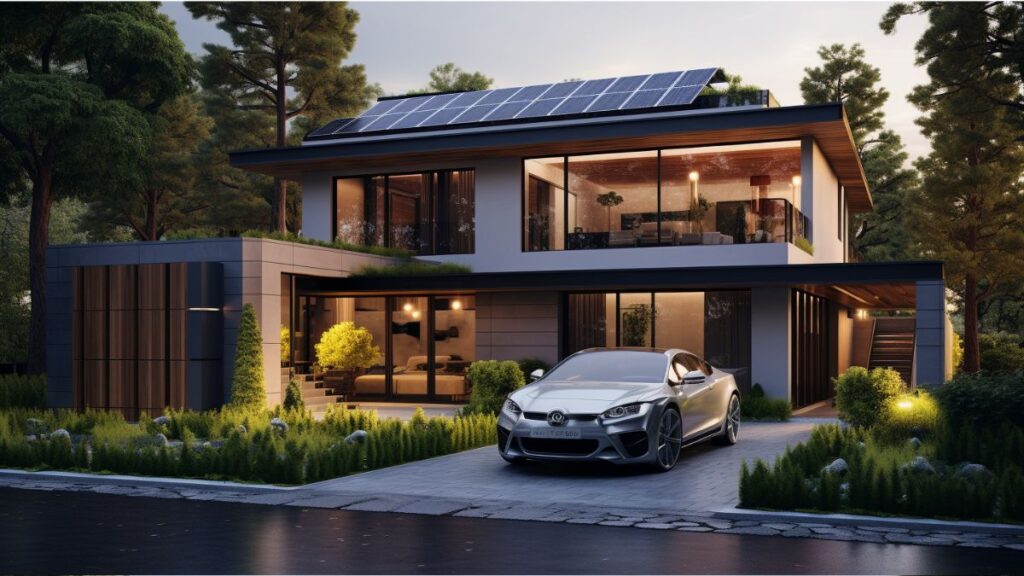
Energy-Efficient Thermostats
Consider installing a programmable thermostat to save up to $200 a year on energy costs. With a programmable thermostat, you can easily program temperature adjustments when no one is home, optimizing energy usage and reducing your carbon footprint.
Here’s why it’s one of the best green home improvements:
- Savings: By adjusting temperature settings automatically, you can save up to $200 per year on heating and cooling costs.
- Energy Efficiency: Programmable thermostats decrease energy bills by 10% on average, helping you create a more sustainable future.
- Easy Installation: Installing a programmable thermostat requires minimal effort and investment, making it an accessible option for everyone.
Caulking and Weather-stripping Techniques
Seal gaps and cracks in your windows, doors, and baseboards with caulk and weather-stripping to improve energy efficiency and reduce heating costs. By addressing these areas of potential air leakage, you can prevent heat from escaping your home during the colder months.
According to experts, re-caulking and weather-stripping can save you 5-10% on your home heating costs.
To get started, check for air leaks in baseboards, window frames, vents, fans, and other areas of your home. Use spray foam to fill larger gaps and caulk for smaller cracks. These simple steps will help keep warm air inside where it belongs.
Additionally, consider using plastic over windows during the colder months to improve insulation. This added layer can further minimize heat loss and maximize energy efficiency.
Maximizing Ceiling Fan Efficiency
To maximize the efficiency of your ceiling fan, make sure to run it counterclockwise during warmer months and clockwise in winter to effectively cool or circulate warm air throughout the room. This simple adjustment can have a significant impact on your energy consumption and comfort.
Here are three key benefits of optimizing your ceiling fan usage:
- Energy savings: Running your ceiling fan in the correct direction can reduce your energy usage by up to 40% during warmer months and 10% during winter. By circulating air properly, you can rely less on expensive heating or cooling systems.
- Comfort enhancement: In summer, running the fan counterclockwise creates a wind-chill effect that makes you feel cooler. In winter, running it clockwise helps distribute warm air evenly throughout the room, improving overall comfort.
- Cost reduction: By using your ceiling fan efficiently, you can lower your energy bills and save money in the long run. This small change is an easy and cost-effective way to make your home more sustainable while enjoying a comfortable living environment.
Insulation Enhancements
You can increase the energy efficiency of your home by enhancing the insulation in key areas like the attic and exterior walls. Adding insulation in these areas is a data-driven solution that can have a significant impact on your heating and cooling bills.
According to the Department of Energy, proper attic insulation alone can reduce energy bills by 10 to 50%. Insulation upgrades are not only cost-effective but also contribute to creating a sustainable future for your home.
By preventing heat loss during winter and heat gain during summer, enhanced insulation helps maintain comfortable temperatures year-round while reducing your carbon footprint.
Consider DIY options like blow-in wool or recycled cotton denim insulation for a cost-effective way to improve energy efficiency in your home.
Energy-Saving Windows and Doors
Now that you’ve taken steps to enhance the insulation in your home, let’s move on to another important aspect of creating a sustainable living space: energy-saving windows and doors. Upgrading your windows and doors can have a significant impact on both energy efficiency and overall comfort in your home.
Here are three key benefits of investing in energy-saving windows and doors:
- Improved insulation: Energy-efficient windows and doors are designed to minimize heat transfer, keeping the outside air from seeping into your home. This helps maintain a consistent indoor temperature, reducing the need for excessive heating or cooling.
- Lower energy bills: By preventing drafts and improving insulation, energy-saving windows and doors can significantly reduce your reliance on heating and cooling systems. This translates into lower energy consumption and ultimately lowers utility bills.
- Increased comfort: By reducing drafts and maintaining more stable temperatures indoors, energy-saving windows and doors create a more comfortable living environment year-round.
Eco-Friendly Material Choices
Investing in eco-friendly materials for your home can contribute to a greener and more sustainable living environment. By choosing materials like water-based ink printed paper, milk paint, or acrylic paint, you can reduce waste and keep airborne toxins out of your home.
Lighter colors on walls maximize energy efficiency by reflecting heat and light. Consider sustainable options like bamboo or reclaimed wood for kitchen counters. These choices not only benefit the environment but also create a sense of belonging to a community that values sustainability.
Using eco-friendly materials is a data-driven solution that allows you to make a positive impact on the planet while enjoying the comfort and aesthetics of your home. Join the movement towards sustainability and be part of creating a better future for all.
Efficient Water Heating Solutions
Using energy-efficient water heaters can significantly reduce your utility bills and decrease your environmental impact. Here are some solutions to consider:
- Tankless Water Heaters: These units heat water on demand, eliminating the need for a storage tank and reducing standby energy loss.
- Heat Pump Water Heaters: They transfer heat from the surrounding air or ground to heat the water, making them highly efficient.
- Solar Water Heaters: These systems use solar energy to heat the water, reducing reliance on fossil fuels.
By upgrading to these energy-efficient options, you can save money and help protect the environment. According to Energy.gov, switching to a tankless water heater alone can save up to $100 per year in utility costs. Additionally, using solar or heat pump water heaters can reduce greenhouse gas emissions by 50% compared to conventional models.
Make a positive impact while enjoying hot showers and lower bills with these efficient water heating solutions.
Sustainable Laundry Room Practices
Try implementing sustainable practices in your laundry room to reduce energy usage and minimize environmental impact. By sorting your dirty clothes by color, you can make the most of every load and avoid unnecessary water waste.
Washing most loads in cold water with high-efficiency detergents can significantly reduce energy consumption. Additionally, consider adding hooks, racks, or a clothesline for energy-efficient drying instead of relying solely on a dryer. To convey a deeper meaning on the benefits of these sustainable laundry practices, refer to the table below:
| Sustainable Laundry Practices | Benefits |
|---|---|
| Sort clothes by color | Maximizes every load and reduces water waste |
| Wash most loads in cold water with high-efficiency detergents | Significantly reduces energy consumption |
| Use hooks, racks, or a clothesline for drying | Reduces reliance on dryer and saves energy |
Implementing these sustainable laundry practices not only helps you save money on utility bills but also contributes to reducing carbon emissions and conserving precious resources. Join the growing community of environmentally conscious individuals who are making a positive impact through small changes in their daily routines.
Kitchen Efficiency Upgrades
To make your kitchen more energy-efficient, consider upgrading to appliances with the ENERGY STAR label. These appliances are designed to reduce electricity and gas bills, saving you money in the long run. Additionally, they contribute to a sustainable future by conserving energy and reducing greenhouse gas emissions.
Here are three benefits of upgrading your kitchen appliances:
- Energy savings: ENERGY STAR certified appliances use less energy than standard models, resulting in lower utility bills and reduced environmental impact.
- Increased resale value: Upgrading to energy-efficient appliances can increase the value of your home, making it more appealing to potential buyers.
- Sustainable materials: Consider using sustainable options like bamboo or reclaimed wood for kitchen counters. These materials not only look stylish but also minimize waste and promote eco-friendly practices.
Investing in energy-efficient appliances is a smart choice that benefits both your wallet and the planet. By making these upgrades, you can create a more efficient and environmentally friendly kitchen while enjoying the latest technology and design trends.
Related Post: Eco-Friendly Kitchen Products: Revolutionary Kitchen for A More Sustainable Lifestyle.
Frequently Asked Questions
Are There Any Incentives or Rebates Available for Implementing Green Home Improvements?
Yes, there are incentives and rebates available for implementing green home improvements. These can include federal and state programs, utility company rebates, and tax credits. Research and apply for these opportunities to save money while making your home more sustainable.
What Are Some Ways to Reduce Water Consumption in the Bathroom Besides Installing Low-Flow Fixtures?
To reduce water consumption in the bathroom, consider shorter showers, turning off the faucet while brushing your teeth, and fixing any leaks promptly. These simple actions can make a big difference in conserving water and promoting sustainability in your home.
How Can I Determine the Energy Efficiency of My HVAC System?
To determine the energy efficiency of your HVAC system, you can schedule an energy audit. This assessment measures airtightness and identifies heat loss. It costs around $400 but can save 5-30% on annual energy bills.
Are There Any Options for Financing Green Home Improvements?
Yes, there are options for financing green home improvements. Consider exploring programs like energy-efficient mortgages or personal loans. These can help you invest in a sustainable future while spreading out the cost over time.
Can You Provide Some Tips for Making a Home More Energy-Efficient on a Budget?
To make your home more energy-efficient on a budget, consider LED lighting, programmable thermostats, caulking and weather-stripping, ceiling fans, insulation upgrades, efficient windows and doors, eco-friendly materials, water-saving fixtures, and smart appliances.
Conclusion
Upgrading your home with green home improvements is a smart choice for a sustainable future. By implementing energy-efficient lighting, thermostats, insulation, and eco-friendly materials, you can significantly reduce your carbon footprint and save money on utility bills.
For example, let’s consider the case of the Johnson family who decided to install solar panels on their roof. They saw a remarkable decrease in their electricity bills and even generated excess energy that they could sell back to the grid. This not only helped them save money but also contributed to a cleaner environment by using renewable energy sources.
Making these upgrades will not only benefit you financially but also contribute to a more environmentally friendly world.

